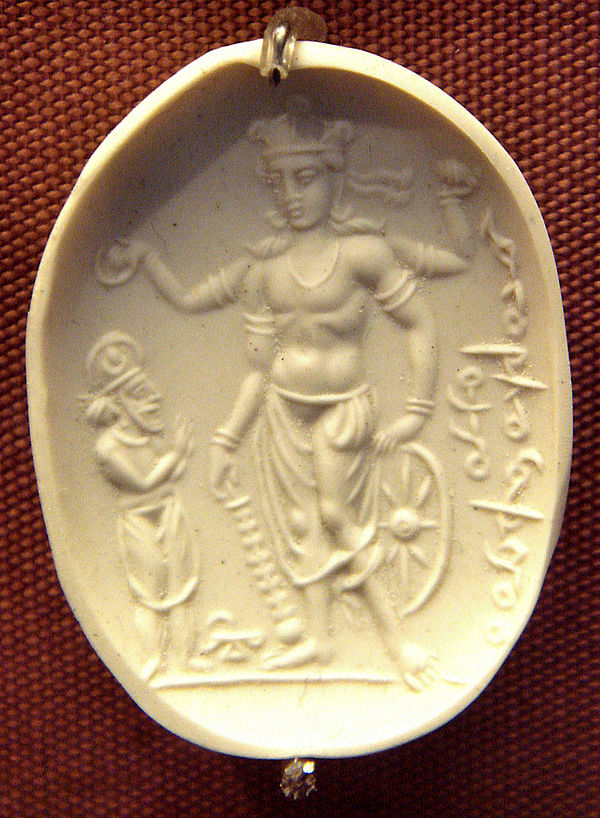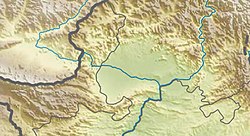Top Qs
Timeline
Chat
Perspective
Vishnu nicolo seal
From Wikipedia, the free encyclopedia
Remove ads
The Vishnu nicolo seal is a "finely engraved" oval agate seal (1.4 inches by 1.05 inch) from the Gandhara region, dated to the 4th century CE. Since 1892 it has been in the British Museum.[1] Nicolo is an abbreviation of the Italian onicolo, meaning "little onyx", a type of stone, often made of different layers in various shades of blue, used for intagli.[2]
The seal depicts a four-armed deity, probably Vishnu or Vāsudeva,[3] being prayed by a royal devotee. The deity holds Vishnu's classical attributes: the gada club, the chakra discus, the wheel and the lotus.[4][5][1] There is a two-line inscription and a monogram by the worshipper's feet.[1]
The British Museum describes the inscription as "Bactrian", transliterating it: "(1) saso reo iastoo (2) algo", translated as: "Sas-re(w) the leader of worship (?)".[1]
It was found in what was then the North-West Frontier Province of British India, now Khyber Pakhtunkhwa of Pakistan.[1]
Remove ads
Interpretations
Summarize
Perspective
The seal was first reported by Alexander Cunningham in The Numismatic Chronicle of 1893.[4][6] Cunningham, saw in the devotee the Kushan emperor Huvishka, who reigned about 140-180 BC, based on the similarity of the headdress.[5]
More recently Roman Ghirshman proposed that the text on the seal was in the Kushan script and mentions three major Hindu gods:
A more recent interpretation suggests the divinity is Vāsudeva, an early deity whose attributes were later reused in the iconography of Vishnu with the addition of an aureole.[3][8]
This recent research also identified the devotee, not with Huvishka, but with a Huna king.[6][5] The devotee could also be a Kushano-Sasanian or a Kidarite prince.[9]
The seal also suggest that a composite cult of the three deities Surya (another name for Mihira, meaning "Sun"), Vishnu and Shiva was current in India circa 500 CE.[6] However, the British Museum in 2019 gives a different reading of the inscription.[1]
- Vishnu, with similar attributes, Udayagiri Caves (c. 5th century).
- The devotee in the Vishnu Nicolo Seal (detail).
- Vishnu Nicolo Seal, as first reported by Alexander Cunningham in 1893.
Remove ads
Notes
References
Further reading
Wikiwand - on
Seamless Wikipedia browsing. On steroids.
Remove ads








